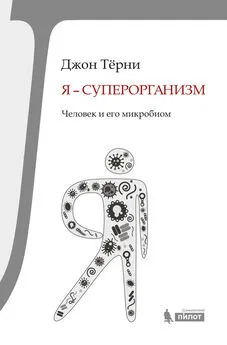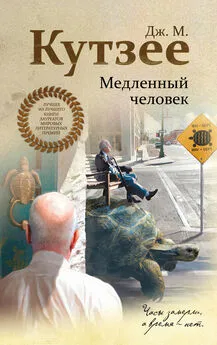Джон Тёрни - Я – суперорганизм! Человек и его микробиом
- Название:Я – суперорганизм! Человек и его микробиом
- Автор:
- Жанр:
- Издательство:ЛитагентБИНОМ. Лаборатория знанийa493f192-47a0-11e3-b656-0025905a06ea
- Год:2016
- Город:Москва
- ISBN:978-5-00101-416-4
- Рейтинг:
- Избранное:Добавить в избранное
-
Отзывы:
-
Ваша оценка:
Джон Тёрни - Я – суперорганизм! Человек и его микробиом краткое содержание
В каждом из нас живет множество бактерий и вирусов-во рту, на коже, в кишечнике. Они помогают переваривать пищу и усваивать лекарства, влияют на нашу гормональную и иммунную системы и более того – даже на мозг! Все это сообщество микроорганизмов ученые назвали микробиомом.
Джон Тёрни рассказывает о самых последних исследованиях микробиома, о его возникновении, росте и роли в развитии самых разных болезней (аллергии, диабета, желудочно-кишечных расстройств, рака и шизофрении). Прочтя эту книгу, вы, несомненно, по-новому ощутите свой организм, свое тело; по-новому посмотрите на себя как на личность.
В формате pdf A4 сохранен издательский дизайн.
Я – суперорганизм! Человек и его микробиом - читать онлайн бесплатно ознакомительный отрывок
Интервал:
Закладка:
Eren, A. Murat, et al (2014). Oligotyping analysis of the human oral microbiome. Proceedings of the National Academy of Sciences , June 25, E2875–2884.
Erickson, Alison, et al (2012). Integrated Metagenomics/Metaproteomics Reveals Human Host – Microbiota Signatures of Crohn’s Disease. PloS One . 7: e49138.
Everett, M. L., et al (2004). Immune Exclusion and Immune Inclusion: a New Model of Host – Bacterial Interactions in the Gut. Clinical and Applied Immunology Reviews . 5: 321–332.
Fierer, Noah, et al (2010). Forensic identification using skin bacterial communities. Proceedings of the National Academy of Science , 107: 6477–6481.
Foster, Jane, and Karen-Anne Neufeld (2013). Gut – brain axis: how the microbiome influences anxiety and depression. Trends in Neurosciences , 36: 305–312.
Fowler, R. (1986). Howard Hughes: A psychological autopsy. Psychology Today , May, 22–33.
Freddolino, Peter, and Saeed Tavazoie (2012). The Dawn of Virtual Cell Biology. Cell , 150: 248–251.
Funkhouser, Lisa, and Seth Bordenstein (2013). Mom Knows Best: The Universality of Maternal Microbial Transmission. PloS Biology . 11: e1001631.
Furusawa, Yukihiro, et al (2013). Commensal microbe-derived butyrate induces the differentiation of colonic regulatory T-cells. Nature , 504: 446–450.
Ganapathy, Vadivel, et al (2013). Transporters for short-chain fatty acids as the molecular link between colonic bacteria and the host. Current Opinion in Pharmacology , 13: 869–874.
Gest, Howard (2004). The Discovery of Microorganisms by Robert Hooke and Antoni van Leeuwenhoek, Fellows of the Royal Society. Notes and Records of the Royal Society of London, 58: 187–201.
Gevers, Dirk, et al (2014). The Treatment-Naive Microbiome in New-Onset Crohn’s Disease. Cell Host & Microbe . 15: 382–392.
Gibbons, Ann (2014). The Evolution of Diet. National Geographic , August.
Ginsberg, Alexandra, et al (2014). Synthetic Aesthetics: Investigating Synthetic Biology’s Designs on Nature . MIT Press.
Goldenberg, J., et al (2013). Probiotics for the prevention of Clostridium difficile associated diarrhea in adults and children. Cochrane Database Systematic Reviews. 5: CD006095.
Greenblum, Sharon, et al (2013). Towards a predictive systems-level model of the human microbiome: progress, challenges, and opportunities. Current Opinion in Biotechnology , 24:810–820.
Hagymasi, Kristina, et al (2014). Helicobacter pylori infection: New pathogenetic and clinical aspects. World Journal of Gastroenterology . 20: 6386–6399.
Hanage, William (2014). Microbiome science needs a healthy dose of scepticism. Nature , 512: 247–8.
Hickey, Roxana, et al (2012). Understanding vaginal microbiome complexity from an ecological perspective. Translational Research , 160: 267–282.
Hornick, R., et al (1970). Typhoid Fever: Pathogenesis and Immunologic Control. New England Journal of Medicine , 283: 739–746.
Hospodsky, D., et al (2014). Hand bacterial communities vary across two different human populations. Microbiology , 160:1144–1152.
House P. K., et al (2011). Predator cat odors activate sexual arousal pathways in brains of Toxoplasma gondii infected rats. PLoS One , 6: e23277.
Hsiao, Elaine, et al (2013). Microbiota Modulate Behavioral and Physiological Abnormalities Associated with Neurodevelopmental Disorders. Cell , 155: 1451–1463.
Human Microbiome Project Consortium (2012). A framework for human microbiome research. Nature , 486: 215–219.
Human Microbiome Project Consortium (2012). Structure, function and diversity of the healthy human microbiome. Nature , 486: 207–214.
Jackson, Mark (2006). Allergy: The History of a Modern Malady . Reaktion Books.
Jeurink, P., et al (2013). Human milk: a source of more life than we imagine. Beneficial Microbes , 4: 17–30.
Joyce, Christopher (2014). Soil Doctors Hit Pay Dirt In Manhattan’s Central Park. http://www.npr.org/2014/10/02/353066730.
Kankainen, M., et al (2009). Comparative genomic analysis of Lactobacillus rhamnosus GG reveals pili containing a human-mucus binding protein. Proceedings of the National Academy of Sciences . 106:17193–17198.
Kaptchuk, Ted, et al (2010). Placebos without Deception: A Randomised Controlled Trial in Irritable Bowel Syndrome. PloS One . 0015591.
Karlsson, F. H., et al (2014). Metagenomic Data Utilization and Analysis (MEDUSA) and Construction of a Global Gut Microbial Gene Catalogue. PLoS Comput Biol 10: e1003706.
Karr, Jonathan, et al (2012). A Whole-Cell Computational Model Predicts Phenotype from Genotype. Cell , 150:398–401.
Keeney, Kristie, et al (2014). Effects of Antibiotics on Human Microbiota and Subsequent Disease. Annual Review of Microbiology . 68: 217–35.
Khanna, Sahil, et al (2014). Clinical Evaluation of SER–90, a Rationally Designed, Oral Microbiome-Based Therapeutic for the Treatment of Recurrent Clostridium difficile . Доклад прочитан на конференции Американской гастроэнтерологической ассоциации. http://www.gastro.org/news/articles/2014/08/14/new-frontiers-of-fecal-microbiota-transplantation.
Klein, Jan (1982). Immunology: The Science of Self – Nonself Discrimination . John Wiley.
Koenig, Amy, et al (2010). Succession of microbial consortia in the developing infant gut microbiome. Proceedings of the National Academy of Sciences , 1000081107.
Kort, Remco, et al (2014). Shaping the oral microbiota through intimate kissing. Microbiome , 2:41.
Kotula, Jonathan, et al (2014). Programmable bacteria detect and record an environmental signal in the mammalian gut. Proceedings of the National Academy of Sciences , 111: 4838–4843.
Kroes, I. et al (1999). Bacterial diversity within the human subgingival crevice. Proceedings of the National Academy of Sciences . 96: 14547–52.
La Rosa, Patricio, et al (2014). Patterned progression of bacterial populations in the premature infant gut. Proceedings of the National Academy of Sciences , 111:12522–12527.
Lax, S., et al (2014). Longitudinal analysis of microbial interaction between humans and the indoor environment. Science , 345: 1048–1052.
Lecuit, Marc and Marc Eloit (2013). The human virome: new tools and new concepts. Trends in Microbiology , 21: 510–515.
Lederberg, Joshua (2000). Infectious History. Science , 288: 287–293.
Lee, Stewart (2010). How I Escaped my Certain Fate – The Life and Deaths of a Stand-Up Comedian . Faber.
Lee, Yun, and Sarkis Mazmanian (2010). Has the Microbiota Played a Critical Role in the Evolution of the Adaptive Immune System? Science , 330: 1195568.
Ley, R., et al (2005). Obesity alters gut microbial ecology. Proceedings of the National Academy of Sciences , 102: 11070–11075.
Li, Juanha, et al (2014). An Integrated Catalogue of reference genes in the human gut microbiome. Nature Biotechnology , выложено на сайте 6 июля 2014 года.
Loscalzo, Joseph (2013). Gut Microbiota, the Genome, and Diet in Atherogenesis. New England Journal of Medicine , 368:17.
Luckey, T. (1972). Introduction to intestinal microecology. American Journal of Clinical Nutrition . 25: 1292–1294.
Lyte, Mark (2014). Microbial endocrinology: Host – microbiota neuroendocrine interactions. Gut Microbes , 5: 28682.
Lyte, Mark, and Primrose Freestone, eds (2010). Microbial Endocrinology: Interkingdom Signaling in Infectious Disease and Health . Springer.
Martin, Emily (1994). Flexible Bodies: The role of immunity in American culture from the days of polio to the age of AIDS . Beacon Press.
Matzinger, P. (2002). The danger model: a renewed sense of self. Science , 296: 301–305.
Maxman, A. (2013). Designing for microscopic life in the great indoors (Interview with Jessica Green). New Scientist , 20 July.
Maynard, Craig, et al (2012). Reciprocal interactions of the intestinal microbiota and immune system. Nature , 489: 231–241.
Mazmanian, S., et al (2005). An immunomodulatory molecule of symbiotic bacteria directs maturation of the host immune system. Cell , 122: 107–118.
Mazmanian, Sarkis, et al (2008). A microbial symbiosis factor prevents intestinal inflammatory disease. Nature , 453: 620–625.
Mazmanian, Sarkis (2009). Microbial health factor. The Scientist , August 1.
McCord, Aleia et al (2013). Faecal microbiomes of non-human primates in Western Uganda reveal species-specific communities largely resistant to habitat perturbation. American Journal of Primatology , 22238.
McFall-Ngai, Margaret (2007). Care for the community. Nature , 445: 153.
McFall-Ngai, Margaret, et al (2013). Animals in a bacterial world, a new imperative for the life sciences. Proceedings of the National Academy of Sciences , 110, 3229–3236.
Minot, S., et al (2013). Rapid evolution of the human gut virome. Proceedings of the National Academy of Sciences , 110: 12450–12455.
Modi, Sheetal (2013). Antibiotic treatment expands the resistance reservoir and ecological network of the phage metagenome. Nature , 499: 219–223.
Moeller, Andrew, et al (2012). Chimpanzees and humans harbour compositionally similar gut enterotypes. Nature Communications , 3: 1179.
Moeller, Andrew, et al (2014). Rapid changes in the gut microbiome during human evolution. Proceedings of the National Academy of Sciences , Nov 3. doi: 10.1073/pnas. 1419136111.
Montgomery, Scott (1996). The Scientific Voice . Guilford Press.
Morrow, L., et al (2010). Probiotic prophylaxis of ventilator-associated pneumonia: a blinded, randomized, controlled trial. American Journal of Respiratory & Critical Care Medicine . 182: 1058–1064.
Naik, Shruti, et al (2012). Compartmentalized Control of Skin Immunity by Resident Commensals. Science , 337: 1115–1119.
Nakatsuji, Teruaki, et al (2013). The microbiome extends to subepidermal compartments of normal skin. Nature Communications , 4. Feb 5.
Nelson, David, et al (2012) Bacterial Communities of the Coronal Sulcus and Distal Urethra of Adolescent Males. PloS One , 7: e36298.
Nerlich, Brigitte, and Lina Hellsten (2009). Beyond the human genome: microbes, metaphors and what it means to be human in an interconnected post-genomic world. New Genetics and Society , 28: 19–36.
Noble, Denis (2006). The Music of Life: Biology Beyond Genes . Oxford University Press.
Norris, Vic, et al (2013). Hypothesis: bacteria control host appetites. Journal of Bacteriology , 195:411.
O’Malley, Maureen (2014). Philosophy of Microbiology . Oxford University Press.
Ogilvie, Lesley, et al (2013). Genome signature-based dissection of human gut metagenomes to extract subliminal viral sequences. Nature Communications , 3420.
Okada, H., et al (2010). The ‘hygiene hypothesis’ for autoimmune and allergic diseases: an update. Clinical & Experimental Immunology , 160: 1–9.
Paxson, Heather (2008). Post-Pasteurian cultures: The microbiopolitics of raw-milk cheese in the United States. Cultural Anthropology , 23: 15–47.
Читать дальшеИнтервал:
Закладка:






